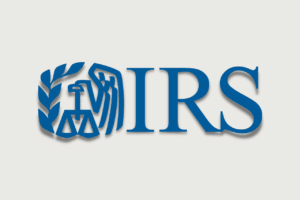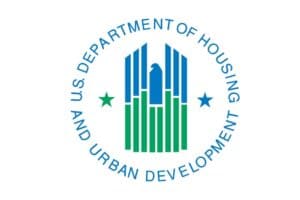News

Fiscal 2014 Appropriations Compromise Presents Winners & Losers
A recently released bipartisan spending measure funds U.S. Department of Housing and Urban Development (HUD) programs at $45.46 billion, increasing funding for certain programs such as the Project-Based Rental Assistance and Tenant Based Rental Assistance programs over FY 2013 post-sequestration levels, but dramatically altering the landscape for others, in particular the Rental Housing Demonstration (RAD) program.

Recent IRS Ruling To Have Significant Implications on Historic Tax Credit Structures; Expected to Attract Increased Investor Activity
On December 31 the Internal Revenue Service (IRS) released safe harbor guidance (Revenue Procedure 2014-12) for structuring federal historic tax credits transactions, which is expected to attract more investment activity.

One Step Closer to Creation of Oklahoma State LIHTC
The Oklahoma Affordable Housing Act (H.B. 3099) recently passed the Oklahoma State House of Representatives by a margin of 75-13, and has now moved to the Senate Finance Committee for consideration….

Colorado Bill Would Provide $15 Million Annually for State Historic Credit
A recently introduced bill in the Colorado House of Representatives, the Colorado Job Creation and Main Street Revitalization Act (H.B. 14-1311), would create a state historic rehabilitation tax credit (HTC) for qualified rehabilitation expenditures to commercial historic structures….

Over $6 Billion in HTC Investments Approved in FY 2013
The National Park Service (NPS) recently released its Fiscal Year (FY) 2013 Annual Report for the Federal Historic Preservation Tax Incentives Program, administered in partnership with State Historic Preservation Offices (SHPOs)…

2014 NH&RA Annual Meeting & Senior Housing Symposium: Conference Materials
All conference materials, PowerPoint presentations, relevant articles, reports, memos, etc. from the 2014 NH&RA Annual Meeting are available below under the relevant session titles. Click below to learn more about the topics that were covered at the meeting! Conference Recordings of each session will be available in NH&RA’s Online Store following the conference.

HUD Office of Multifamily Ambitious with 2014 Policy Goals
Ben Metcalf, Deputy Assistant Secretary for Multifamily Housing Programs recently announced the establishment of the Program Administration Office, which has developed a set of 25 policy priorities for calendar year 2014….

HUD Releases Long-Awaited Updated Section 8 Renewal Guide
HUD has released the draft revised Section 8 Renewal Policy Guide, the agency’s comprehensive guidance for renewing expiring Section 8 contracts, for public comment…

Obama’s FY 2015 Budget Requests $46.7 Billion for HUD Programs
On March 4, President Barack Obama introduced his fiscal year (FY) 2015 budget, requesting a total of $46.7 billion for Department of Housing and Urban Development (HUD) programs, as well as significant policy proposals aimed at improving the Low-Income Housing Tax Credit (LIHTC) program and a proposal to modify and permanently extend the New Markets Tax Credit.

HUD Revises TPV Funding Eligibility Criteria for Certain Properties
HUD recently issued Notice PIH 2014-04 amending the eligibility criteria for certain types of properties applying to receive Tenant Protection Vouchers (TPVs), as defined in a previous HUD Notice PIH 2013-08. Under category 3 of Notice PIH 2013-08, HUD stipulated that TPVs may be made available to provide housing choice voucher rental assistance to residents residing in low-vacancy areas if tenants are paying rents greater than 30 percent of household income as a result of the expiration of affordability restrictions accompanying a mortgage or preservation program administered by HUD. However, the Notice stipulated that the project could not have a Section 202 Direct Loan, FHA-insured primary mortgage or HUD-held primary mortgage in place at the time of the Owner’s application for the funding.

NH&RA Forms RAD Users Group to Share Issues and Ideas with HUD
A new initiative for members involved with the U.S. Department of Housing and Urban Development’s Rental Assistance Demonstration (RAD) was announced at NH&RA’s recent Annual Meeting. At the request of HUD, NH&RA has formed a new working group for RAD users to meet with HUD on a regular basis to discuss challenges and share ideas for improvements to the program. At a kick off session featuring Margaret Salazar, Director of HUD’s Office of Affordable Housing Preservation, was held in conjunction with last week’s NH&RA Annual Meeting. NH&RA members identified the following tips for developers and houing authorities pursuing RAD transactions…

HUD Releases 2014 Annual Adjustment Factors for Section 8 HAP Contracts
HUD has published a notice in the Federal Register announcing the FY-2014 Annual Adjustment Factors (AFF) for adjustment of contract rents for units assisted in certain Section 8 housing assistance payment programs. AAFs are used to calculate rent changes when Section 8 contracts are renewed. Each Section 8 program category uses the AAFs differently and AAFs are not used in determining renewal rents (with the exception of the Project-Based Certificate program), budget-based rents, or for the Tenant-Based Certificate program. AFFs are based on a formula using residential rent and utility cost changes from the Labor Bureau’s most recent Consumer Price Index (CPI) survey.